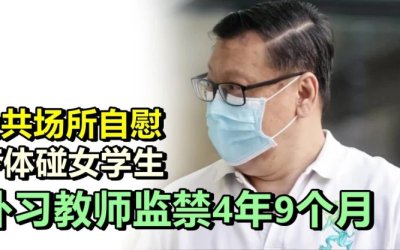2024年4月3日,新加坡永續發展與環境部兼交通部高級政務部長許連碹博士與裕廊集選區議員陳有明就微塑料和納米塑料對人類健康的潛在影響進行討論。

許連碹
新加坡永續發展與環境部兼交通部高級政務部長

陳有明
裕廊集選區議員
以下內容為新加坡眼根據國會英文資料翻譯整理:
陳有明醫生向永續發展與環境部長提問:
(a)部門是否進行了有關微塑料和納米塑料對人類健康潛在影響的前瞻性研究,如果有,是如何進行的;以及
(b)新加坡的可持續發展是否可以納入減少可能導致微塑料和納米塑料進入環境、食物鏈和日常生活的物品的使用。
永續發展與環境部高級政務部長 許連碹博士(代表長永續發展與環境部長)回答:世界衛生組織(WHO)和聯合國糧食及農業組織在其2022年的報告中指出,目前還沒有足夠數據來全面了解微塑料和納米塑料對人類健康的影響。儘管如此,我們正在密切關注國際討論和科學研究的這一主題。
微塑料和納米塑料可能是由較大塑料碎片分解產生的。我們已經實施了措施來減少塑料廢物,並最大程度地減少來自陸地源的塑料廢物進入環境和海洋水域的潛在貢獻。這些措施包括強有力的廢物管理系統、嚴格的禁止亂扔垃圾執法制度,以及鼓勵企業和個人減少一次性塑料消耗的措施。
2024年被指定為公共衛生年。我們正在加大與利益相關者合作,加強清潔,解決亂扔垃圾問題,包括塑料廢物。我們敦促每個人都儘自己的一份力,防止塑料垃圾進入我們的環境。
議長先生:陳有明醫生。
裕廊的陳有明醫生:我感謝高級國務部長的答覆。我有兩個補充問題。第一個問題是,我們的機構是否積極對醫學和科學文獻進行前瞻性調查,而且,我能否提醒部長關注2024年3月7日發表在國際同行評議的期刊《新英格蘭醫學雜誌》上的一篇文章?它的標題是「微塑料和納米塑料在動脈粥樣硬化和心血管事件中的作用」(Microplastics and Nanoplastics in Atheromas and Cardiovascular Events),簡而言之,這篇研究文章探討了微塑料和納米塑料是否存在於患有疾病的人的血管中,以及它們是否與未來心血管疾病風險相關。
所以,我可以問部長第二個問題,雖然現在還處於早期階段,而且這只是國際同行評議期刊上發表的一項研究,永續發展與環境部(MSE)是否會與衛生部(MOH)和其他健康機構合作,了解這方面的不斷發展的證據,以便新加坡可以根據科學的不斷發展及時做出決策?
許連碹博士:我感謝議員的補充問題和意見。讓我說,的確,這個問題正在逐漸引起關注。這個問題已成為各種國際研究和研究的主題,正如議員所引用的那樣,這是其中之一。
但正如我先前提到的,根據我之前引用的2022年WHO報告,該報告指出,目前全球對微塑料和納米塑料對健康風險的影響的證據仍然不足,需要更多數據來更好地了解人類的暴露情況以及進一步表征和量化人類健康風險。
即使像議員所引用的研究也得出了需要進一步研究的結論。
因此,MSE和MOH以及各個相關機構正在緊密合作,以更好地了解和監測這些環境污染物 - 微塑料和納米塑料 - 對人類健康的影響,我們將繼續跟蹤這一領域的國際研究和研究,並願意考慮支持有關此主題的相關和有用的研究。
但與此同時,我們將繼續研究如何減少塑料廢物,以及通過我們的廢物管理系統、禁止亂扔垃圾的執法制度以及讓企業和個人也減少塑料廢物創造的數量,減少塑料廢物進入環境和海洋水域的數量。
並且,作為一個保證,讓我也說說,自2017年以來,公用事業局已經在我們的四個國家自來水源中進行了兩年一次的監測,以檢測水中是否存在微塑料。截至2023年的最新測試結果,我們在經過處理的水中沒有檢測到任何微塑料,我們將繼續繼續監測這一領域的發展情況。

以下是英文質詢內容:
Dr Tan Wu Meng asked the Minister for Sustainability and the Environment (a) whether the Ministry performs horizon scanning of the potential impact of microplastics and nanoplastics on human health and, if so, how; and (b) whether Singapore's sustainability efforts can incorporate reducing the use of items which may contribute to microplastics and nanoplastics being introduced into the environment, food chain and daily life.
The Senior Minister of State for Sustainability and the Environment (Dr Amy Khor Lean Suan) (for the Minister for Sustainability and the Environment): The World Health Organization (WHO) and Food and Agriculture Organisation of the United Nations have indicated in their respective reports in 2022 that there is insufficient data to fully understand the impact of microplastics and nanoplastics on human health. Nonetheless, we are closely monitoring international discussions and scientific studies on this topic.
Microplastics and nanoplastics can be produced from the breakdown of larger plastic debris. We have implemented measures to reduce plastic waste, as well as minimise the potential contribution of plastic debris into the environment and marine waters from land-based sources. These include robust waste management systems, a strict anti-littering enforcement regime and measures to encourage businesses and individuals to reduce the consumption of single-use plastics.
Sir, 2024 is designated as the Year of Public Hygiene. We are increasing efforts to work with stakeholders to enhance cleanliness and address littering, including that of plastic waste. We urge everyone to do your part, to keep plastic litter from entering our environment.
Mr Speaker: Dr Tan Wu Meng.
Dr Tan Wu Meng (Jurong): I thank the Senior Minister of State for her answer. I have two supplementary questions. The first question is on whether or not our agencies are actively doing horizon scans of the medical and scientific literature, and further to that, may I draw the Minister's attention to an article published in the international peer-reviewed journal, The New England Journal of Medicine, on 7 March 2024? It is entitled "Microplastics and Nanoplastics in Atheromas and Cardiovascular Events", in summary, the research article looks at whether microplastics and nanoplastics can be found in the blood vessels of persons who are unwell and if they correlate with future risk of cardiovascular illness.
So, can I ask secondly to the Minister, although it is still in its early days and although this is just one study published in an international peer-reviewed journal, will the Ministry of Sustainability and the Environment (MSE) work with the Ministry of Health (MOH) and other health agencies, to get a sense of what the evolving evidence is on this, so that Singapore can move and make decisions in a timely way, as our understanding evolves regarding the science?
Dr Amy Khor Lean Suan: I thank the Member for his supplementary questions, as well as comments. Let me say that, indeed, there is growing momentum on this issue. This issue has been the subject of various international studies and research, and as the Member has cited, this is one of the research that has been undertaken.
But as I have noted, currently, based on the 2022 WHO report that I had cited earlier, the report has stated that the current global evidence on the impact of micro- and nanoplastics on health risk is still inconclusive and more data is needed to better understand the human exposure as well as then to characterise and quantify human health risks.
Even studies, like what the Member has cited, also conclude that further research has to be done.
So, indeed, MSE and MOH and various relevant agencies are working closely together, to better understand and monitor the impact of such environmental pollutants – microplastics and nanoplastics – on human health, and we will continue, as I have said, to track international studies and research in this area and we are open to considering support for relevant and useful research on this topic.























